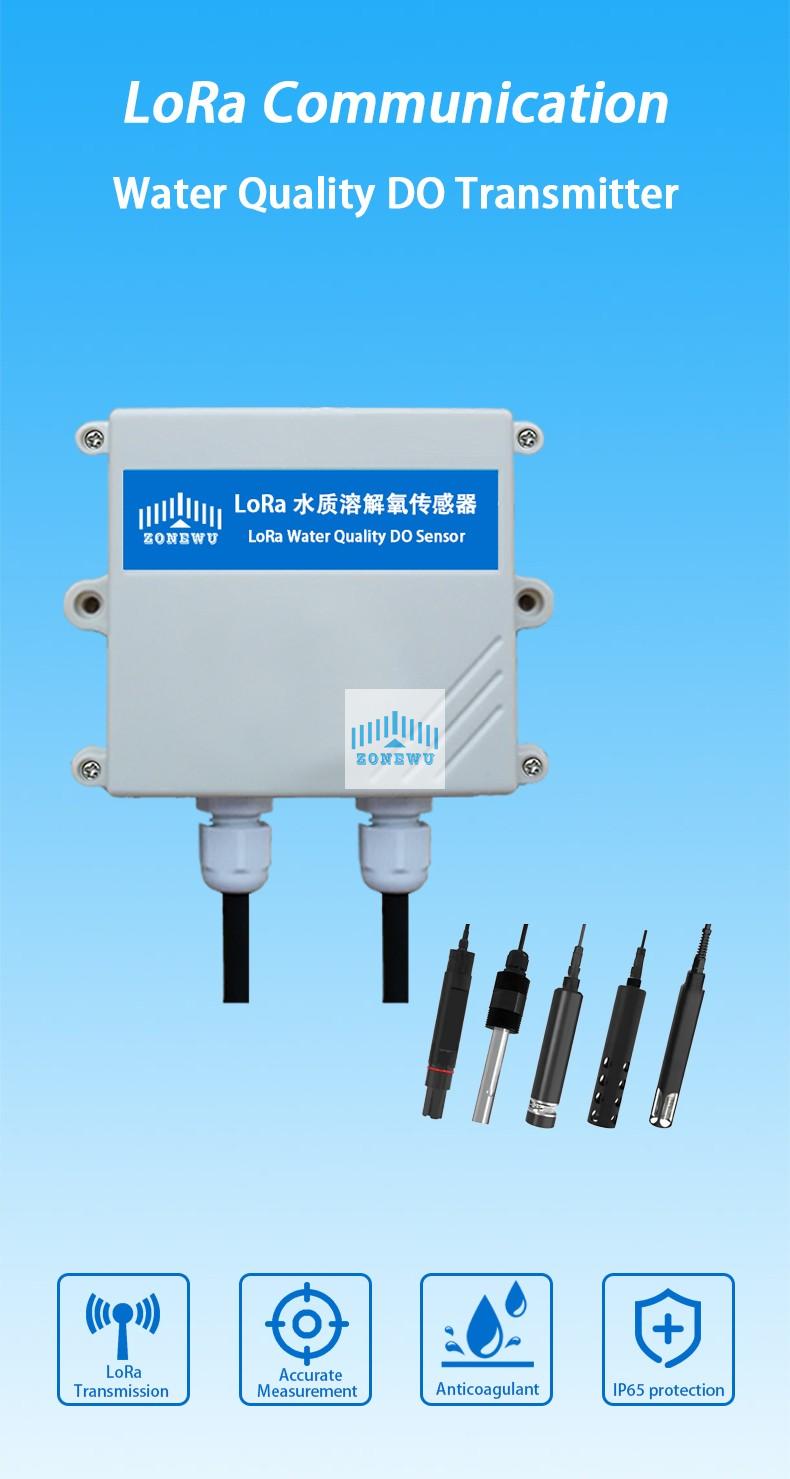To choose the suitable LoRa water quality dissolved oxygen sensor, we need to consider the measurement performance, communication ability, environmental adaptability and other aspects. The following are the specific points:
· Measurement range: it shall be determined according to the actual application scenario. For example, in aquaculture, when the dissolved oxygen content is in 0-20 mg/L, the measurement range of 0-20 mg/L or slightly wider sensor can be selected; if used in sewage treatment plant, higher dissolved oxygen concentration may be measured, and the measurement range of 0-50 mg/L or even higher sensor can be selected.
· Precision: Precision determines the accuracy of the measurement results. For scientific research monitoring, high standard aquaculture, the accuracy is usually ± 0.1mg / L or even higher; general water quality monitoring is ± 0.2 mg/L or ± 0.3mg / L.
· Response time: If you need to quickly obtain dissolved oxygen data in real time, and adjust the process parameters in time during the industrial wastewater treatment, the sensor with short response time should be selected, generally within seconds to tens of seconds; For some scenarios with low real-time requirements, such as regular monitoring of rivers and lakes, the response time is also acceptable in 1-2 minutes.
· Spectral sensor: has a fast response speed and low procurement cost, but need to replace the membrane and electrode regularly, maintenance cost is high, suitable for the accuracy requirement is not very high, maintenance conditions are good scenarios.
· Fluorescent sensor: no preheating time, no stirring or water flow can be accurately measured, keep calibration time longer, less maintenance, but the price is relatively high, suitable for high measurement accuracy and stability requirements, field or remote areas maintenance inconvenience.
· LoRa band: Different LoRa bands may be used in different regions to ensure that the LoRa module of the selected sensor works on the locally available band to ensure smooth communication.
· Transmission distance: select the sensor with the appropriate transmission distance according to the distance between the monitoring point and the receiving end. In general, LoRa can be transmitted for several kilometers in open environments, but is shortened in environments with obstacles. If the monitoring points are widely distributed and far away, such as in large reservoirs or watershed monitoring, the sensor with long transmission distance should be selected.
· Communication stability: select the sensor with LoRa module with strong anti-interference ability and stable signal transmission to ensure that the data can be accurately and timely transmitted to the receiver.
· Temperature range: If it is used in winter in cold areas or summer in hot areas, it is necessary to choose a sensor that can adapt to the corresponding temperature range to avoid the impact temperature has on the measurement results and sensor performance.
· Waterproof and dust proof level: used in outdoor water environment, waterproof and dust proof level is very important. In general, IP67 level sensors can meet the needs of most outdoor application scenarios, preventing dust entry and a short immersion in water at a certain depth.
· Corrosion resistance: If the water contains corrosive substances, such as acid and alkali components in industrial wastewater, seawater, etc., it is necessary to choose sensors with corrosion resistance performance to extend the service life of the sensor.
· Battery type: choose the appropriate battery type according to the use scenario and requirements. Lithium battery has the advantages of high energy density, small volume, light weight, suitable for long-term deployment in the field of sensors; solar panels can provide long-term stable power support for sensors, suitable for sufficient light environment.
· Battery life: Considering the power consumption and battery capacity of the sensor, select the sensor with a long battery life to reduce the frequency of battery replacement and maintenance cost. For some difficult to replace the battery scenarios, such as deep sea monitoring, remote mountain monitoring, battery life is particularly important.
· Data storage function: If you need to store historical data locally for subsequent query and analysis, sensors with data storage function and large storage capacity can be selected.
· Easily of use: including the sensor installation, debugging, calibration is convenient, whether the operation interface is friendly, etc. Choose easy to operate and maintain sensors, can reduce the cost of use and technical threshold.
· Price and after-sales service: While meeting the performance requirements, select the cost-effective sensors according to the budget. At the same time, the after-sales service and technical support of manufacturers should be considered to ensure that timely technical assistance and parts replacement can be obtained in the process of use.

Contact: Qui
Phone: 18146178586
Tel: 18146178586
Email: qui@zonewu.com
Add: 1501-3, Building F03, Phase III, Software Park, Jimei District, Xiamen City, Fujian Province, China
